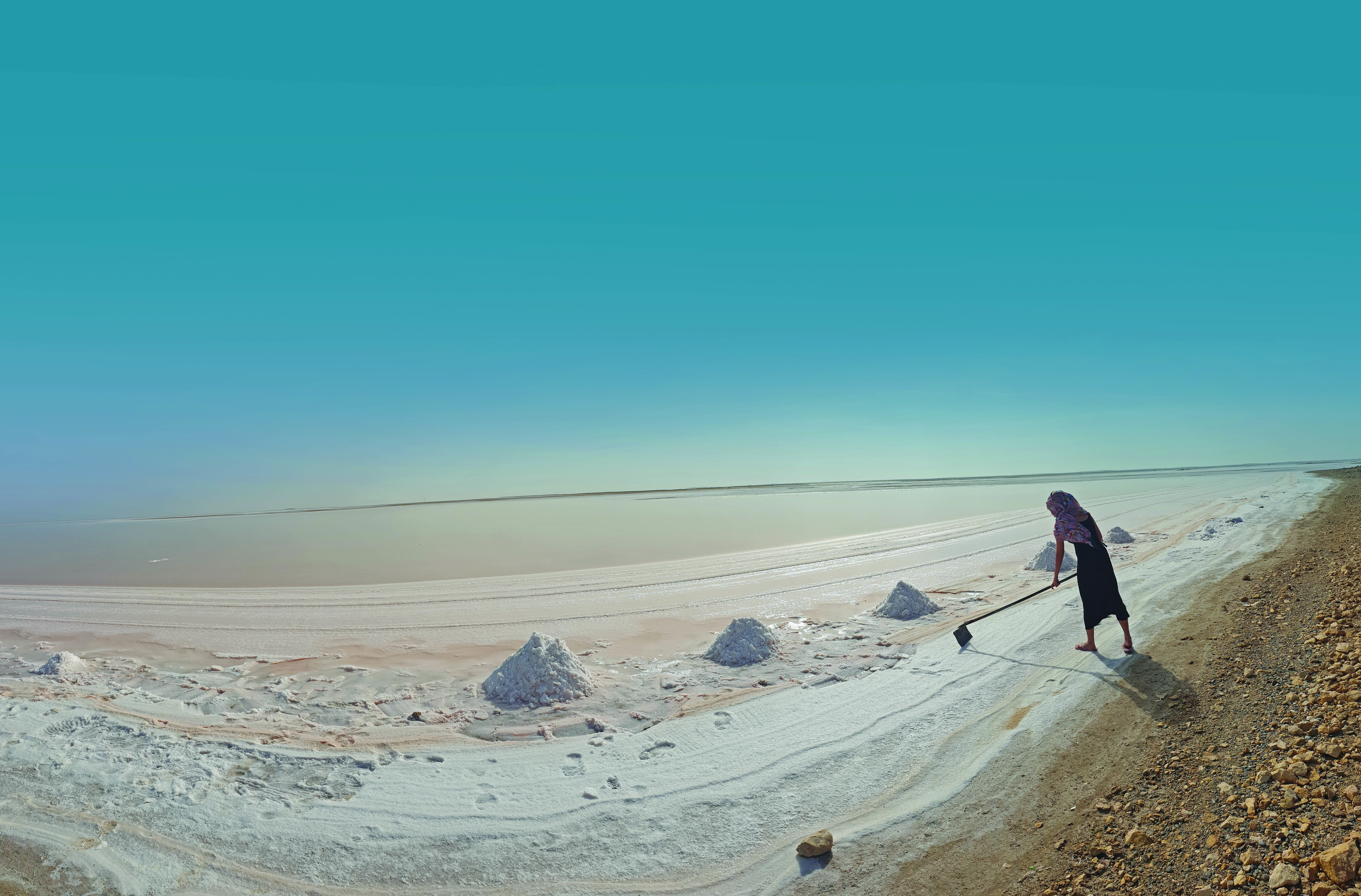

Sugar may sweeten your life, but salt will preserve it.” So said John Christian Bovee. Perfect sense in the time of a pandemic, and slightly ironic, I guess.
You probably have, like us, come across the Shannah salt flats by default, on the way to the Masirah Island ferry. It is almost uncanny to be driving along surrounded by desert and sand, with some glimpses of the sea as we traveled across the interior from Dakhilyah. Oh, and did I mention what a stunningly good road takes you from Sinaw to Mahoot? It is brilliant!
Anyway, it’s only, I guess, half an hour from Mahoot to the Ferry Wharf at Shannah, an experience in itself, and to be greeted by a ‘snowfall’ on one side of the road was interesting and demanded a ‘stop’n’look’ session, with Lena taking some photos. These salt flats are large tracts of tidal, or estuary flats, that once covered in sea (salt) water, have the estuary bulldozed to retain the water.
The Omani sunshine then works its magic, evaporating the water, leaving the salt baking on the ground. The equation for a successful harvest is simple. If evaporation (sunshine), exceeds precipitation (rainfall), salt will be harvested. “Salt,” said Pythagorus (yes, he of the theorem), “Has the purest of parents… the sea and the sun.” I never saw them at work, but apparently groups of laborers harvest the salt by hand, for later processing in Muscat.




Now, the story does not begin and end there, as there was of course, a surfeit of white salt, but there were also tranches, or areas of pinkish salt affected sand, to provide balance for the photos. I thought pink salt was only harvested in the Himalayas, in the form of Himalayan Rock Salt, so I’ll take that with a grain of salt. It is a shame too, that in days past salt was used as currency, and soldiers of ancient Rome were paid in salt rather than coin, and that’s the origin of your monthly ‘salary.’ Truly!
The largest salt flat in the world is the Salar de Uyuni, located in Bolivia, South America. It extends over a massive 10,000 sq kms and is higher above sea level than Jebel Akdhar. It is also a world-renowned breeding ground for the beautiful pink flamingoes. It is a transport route across the high plateau of Central South America and is also rich in mineral deposits.
The Bonneville Salt Flats in Utah, in the United States are less than a tenth of the size, but are much more famous as the testing grounds for numerous vehicles, and is the acknowledged ‘home’ of the most World Land Speed records than any other location. First used for motor sports in 1912, it was immortalized by Sir Malcolm Campbell in ‘Bluebird’ when he exceeded 300mph (485kph) for the first time in 1935.
Thirty years later American Gary Gabelich, in ‘Blue Flame,’ exceeded 1000kph for the first time. Only two years later, New Zealand pensioner and inventor Burt Munro achieved the world’s fastest speed in his category of motorbike, an adapted Indian bike, and is immortalized in the film, ‘The World’s Fastest Indian,’ portrayed by Anthony Hopkins. Of course, speed means accidents, and ten ‘speed merchants’ have perished on ‘the flats,’ the most recent being Ralph Hudson, just last week.
I doubt that Shannah will ever become a haven for ‘speed freaks,’ as it is too inconsistent, being inches thick, whereas Bonneville is 5 feet thick at its thickest. Even those few inches of salt though, spread over a few square kms, add up to a lot of saltshakers filled up. Salt, you see is quite unique, as in cooking, its presence is barely noticed, but its absence… always!
Oman Observer is now on the WhatsApp channel. Click here



